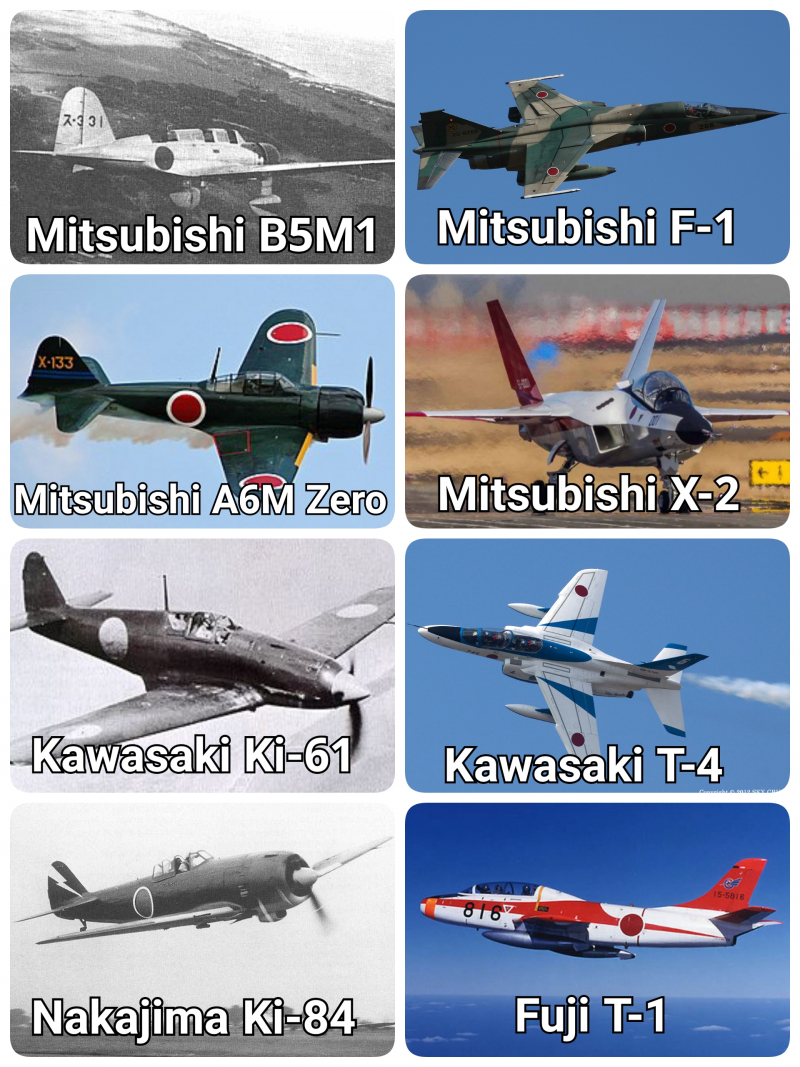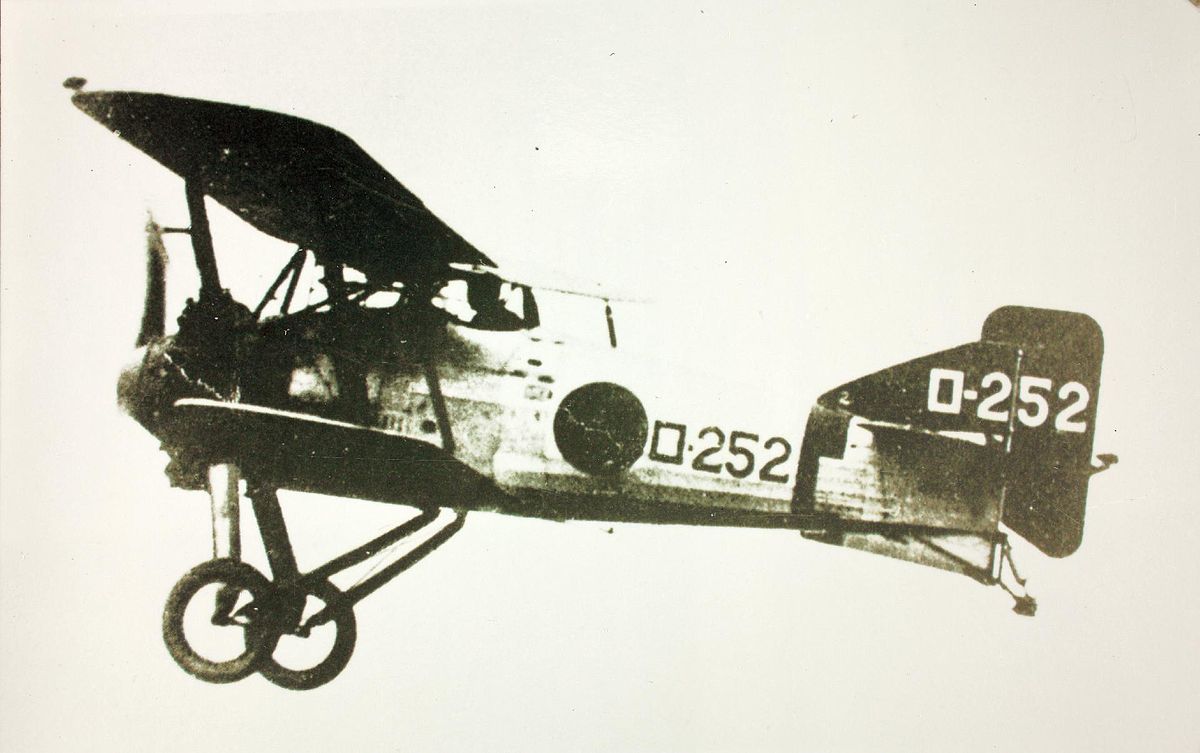Nakajima Aircraft Company - Japan's first aircraft manufacturer, it was founded in 1918 by a naval engineer, Chikuhei Nakajima, and a textile manufacturer, Seibei Kawanishi as Nihon Hikoki (Nippon Aircraft). In 1919, the two founders split and Nakajima bought out Nihon Aircraft's factory with tacit help from the Imperial Japanese Army.
The company was renamed Nakajima Aircraft Company in 1919.[1] Thankfully for the Allies, the scenario described above did not happen. In reality, Japan was running out of raw materials, skilled manpower, and time. Nevertheless, it was developing a host of advanced aircraft in the closing months of the war in hopes of stopping the relentlessly encroaching Allies.
Nakajima Aircraft Company

Faced with the challenge of superb American fighters and bombers, Japanese aircraft manufacturers first looked to modifying existing designs and creating new aircraft that incorporated high-powered, turbo-, and supercharged engines, comparable or superior to America's best.
Rocket-Powered Interceptors
Already the Imperial Japanese Army Air Force was operating the superlative Nakajima Ki-84 (Allied name Frank), a fighter that was a match for the North American P-51D, in China and the Philippines. But better aircraft were necessary if Japan was to counter the growing Allied threat, especially from the B-29s that were striking at the heart of the country.
Potentially even more dangerous to the Allies was the development of rocket-powered interceptors. In late 1943, Japanese officials became concerned about the impending threat from Boeing B-29 Superfortresses. Knowing that Japan did not have an interceptor that could attack the B-29s above 30,000 feet, the Japanese Military Attachés in Berlin acquired the manufacturing rights for the revolutionary Messerschmitt Me 163 rocket-powered interceptor and its Walter HWK 109-509 engine.
The Me 163 could fly 596 miles per hour - almost 200 miles per hour faster than any Allied fighter - and could climb at an astounding rate of 10,000 feet per minute. Although hampered by its short range and 10-minute duration because of its novel engine, the Me 163 appeared to be the ideal solution to the B-29 problem.

The potential capabilities and success of these wonder weapons was frightening; who knows what would have happened if these aircraft had entered service? Nevertheless, the Allies' relentless B-29 bombing and mining campaign and the extraordinarily successful naval blockade cut off Japan's vital fuel and resources while simultaneously destroying Japanese factories and infrastructure, rendering the fate of Japan's wonder weapons moot.
Jet Engine Technology
The company was reborn as Fuji Heavy Industries, maker of Fuji Rabbit scooters & Subaru automobiles, and as Fuji Precision Industries (later renamed as Prince Motor Company which merged with Nissan in August 1966), manufacturer of Prince Skyline and Prince Gloria.
With these feelings in mind, I decided to make this home page hoping to provide footsteps for their predecessors. Please be be sure to visit the Color Illustration Page designed by Shigeo Koike. It would also be appreciated if you were able to take it
the time to answer the attached questionnaires. The Smithsonian's National Air and Space Museum is fortunate to preserve several of these fascinating aircraft. Among the many Japanese artifacts are the sole surviving Kyushu J7W1 Shinden, the last Nakajima Kikka, the only Ohka Model 22, and one of four remaining Nakajima Tsurugis.
Desperate times require desperate measures. While the Japanese aviation industry was working hard to create new, more technologically advanced aircraft and weapons, a shortage of materials and skilled workers forced the industry and the military to attempt more elementary ideas.
After World War Ii
Accordingly, in January 1945, the Japanese Army ordered Nakajima to create a simple, easy-to-build suicide aircraft that could be mass produced in sufficient numbers to stop the coming Allied invasion of Japan. Built of wood and steel, and capable of using a variety of existing radial engines, the Ki 115 Tsurugi prototype was produced in only three months.
It could carry a 1,700-pound bomb and jettison its landing gear for its one-way flight. Poor ground handling and difficult flying characteristics took three months to solve and, although 104 were built, none flew in combat.
To address this problem, the Japanese Navy ordered the design of a longer-ranged jet-powered version, known as the Ohka Model 22. Powered by a Tsu-11 rudimentary turbojet, the Model 22 was designed to fly into battle underneath a Yokosuka P1Y1
bomber, which was much faster than the Betty. It was hoped that the speed of the P1Y1 and the extra range of the Model 22 would allow attacks to be launched outside of patrolling U.S. naval fighters.
After World War Ii
In the end, fifty Ohka Model 22s were built but none were ever launched. An improved version, the Model 33 was to have the more powerful Ne-20 turbojet for extra speed and range and was to be carried by a massive four-engine heavy bomber under development, the Nakajima G8N1 "Rita."

Neither the Model 33 nor the "Rita" were finished in time. Japan's first aircraft manufacturer, it was founded in 1918 by a naval engineer, Chikuhei Nakajima, and a textile manufacturer, Seibei Kawanishi as Nihon Hikoki (Nippon Aircraft).
In 1919, the two founders split and Nakajima bought out Nihon Aircraft's factory with tacit help from the Imperial Japanese Army. The company was renamed Nakajima Aircraft Company in 1919.[1] We rely on the generous support of donors, sponsors, members, and other benefactors to share the history and impact of aviation and spaceflight, educate the public, and inspire future generations.
With your help, we can continue to preserve and safeguard the world's most comprehensive collection of artifacts representing the great achievements of flight and space exploration. After Japan's defeat in World War II the company had to close down since production and research of aircraft was prohibited by the Supreme Commander of the Allied Powers.
Advanced Propeller-Driven Aircraft
This had a severe impact on Nakajima because it was one of the two largest aircraft manufacturers, together with Mitsubishi Heavy Industries (MHI). Unlike MHI though, it was not diversified into shipbuilding and general machinery, and so, had to dissolve into a number of spin-off companies set up by former managers, engineers, and workers.
As a result, leading aeronautical engineers from NAC, such as Ryoichi Nakagawa, helped transform Japan's automobile industry.[1] After Japan's defeat in World War II the company had to close down since production and research of aircraft was prohibited by the Supreme Commander of the Allied Powers.

This had a severe impact on Nakajima because it was one of the two largest aircraft manufacturers, together with Mitsubishi Heavy Industries (MHI). Unlike MHI though, it was not diversified into shipbuilding and general machinery, and so had to dissolve into a number of spin-off companies set up by former managers, engineers, and workers.
As a result, leading aeronautical engineers from NAC, such as Ryoichi Nakagawa, helped transform Japan's automobile industry.[1] The energy of the engineers who pursued their dreams was taunted by the abnormal historical events of the war, but if we look
back at their activities, "Figures and aspects of frontiers who purely pursue the facts and pioneer new things" come to be recognized. Plans for the Me-163 were shipped on two U-boats, one of which was sunk, leaving the Japanese military with only rudimentary data.
Undeterred, in July 1944 the Japanese Navy ordered Mitsubishi to develop its own version of the aircraft designated the J8M and, in a rare example of interservice cooperation, an Army variant known as the Ki-200. Engineer Mijiro Takahashi led the project, producing a glider version by December.
The glide tests were successful, and the first J8M was completed in June 1945. The aircraft's first flight ended in a fatal crash and modifications to the propulsion system were not completed before the war ended.

Nakajima Aircraft, founded by leader Chikuhei Nakajima and other eight members, grew brilliantly and ended its fateful life along with World War II, resembling that of an image on a shadow-picture lantern. But its spirit has been inherited by many later generations
in various fields. The aircraft as a weapon is debatable, but the keen-edged beauty, portrayed by the aircraft, has the aura of a novel inviting to a new world. This is especially true of the reciprocating engine
plane that slashes the air with its propeller and grabs the air with its own wings. It makes us feel as if we can see the engineer's face upon it. The company was reborn as Fuji Heavy Industries, maker of Fuji Rabbit scooters and Subaru automobiles, and as Fuji Precision Industries (later renamed Prince Motor Company which merged with Nissan in August 1966), manufacturer of Prince Skyline and Prince Gloria automobiles.
Fuji began aircraft production in the mid-1950s and has been producing military training aircraft for the Japanese Self Defense Force. Dr. Koyama, a representing chief engineer of Nakajima Aircraft, said at the end of the war, "We, as Nakajima aircraft engineers,
have been doing our best in engineering and producing aircraft for the survival of the nation, but there is an unmistakable truth that the aircraft bereaved many young precious lives. We should never glorify or romanticize these past aircraft."
This was engrained into each engineer's mind, and because of this, there are very few records or memoirs of Nakajima Aircraft. To face this challenge, the Nakajima Aircraft Company turned its attention to building the Ki-87, a high-altitude, heavily armed fighter powered by a single 2,400 horsepower turbosupercharged engine.
It had a top speed of 440 miles per hour, but engine problems delayed production and only one prototype was produced. Meanwhile, Tachikawa built its own similar looking fighter, the Ki-94-II, that had an estimated top speed of 450 miles per hour.
It seemed promising and an order was placed for 18 service test aircraft. But the first flight was scheduled for August 18, 1945, three days after Japan surrendered.
top 10 airplane manufacturers, subaru nakajima, list of small aircraft manufacturers, chikuhei nakajima, private aircraft manufacturers, list of aircraft manufacturers, nakajima aircraft company wikipedia, nakajima corporation